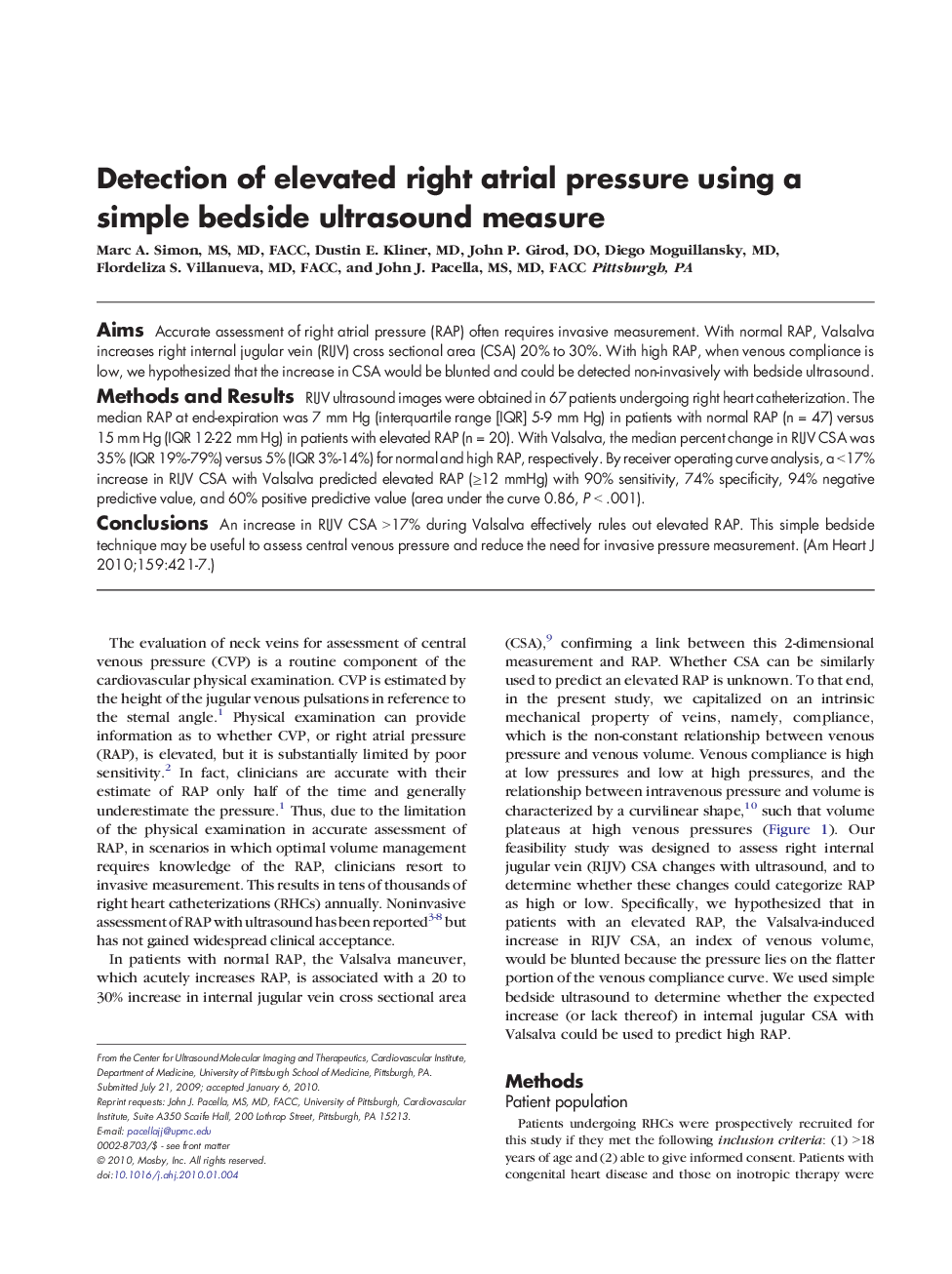| Article ID | Journal | Published Year | Pages | File Type |
|---|---|---|---|---|
| 2850512 | American Heart Journal | 2010 | 7 Pages |
AimsAccurate assessment of right atrial pressure (RAP) often requires invasive measurement. With normal RAP, Valsalva increases right internal jugular vein (RIJV) cross sectional area (CSA) 20% to 30%. With high RAP, when venous compliance is low, we hypothesized that the increase in CSA would be blunted and could be detected non-invasively with bedside ultrasound.Methods and ResultsRIJV ultrasound images were obtained in 67 patients undergoing right heart catheterization. The median RAP at end-expiration was 7 mm Hg (interquartile range [IQR] 5-9 mm Hg) in patients with normal RAP (n = 47) versus 15 mm Hg (IQR 12-22 mm Hg) in patients with elevated RAP (n = 20). With Valsalva, the median percent change in RIJV CSA was 35% (IQR 19%-79%) versus 5% (IQR 3%-14%) for normal and high RAP, respectively. By receiver operating curve analysis, a <17% increase in RIJV CSA with Valsalva predicted elevated RAP (≥12 mmHg) with 90% sensitivity, 74% specificity, 94% negative predictive value, and 60% positive predictive value (area under the curve 0.86, P < .001).ConclusionsAn increase in RIJV CSA >17% during Valsalva effectively rules out elevated RAP. This simple bedside technique may be useful to assess central venous pressure and reduce the need for invasive pressure measurement.
